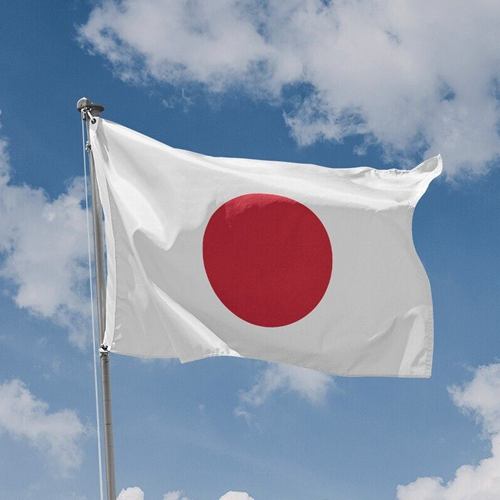Description
Facts about the Japan Flag
The national flag of Japan is officially named the Nisshoki, which means the sun-mark flag. This name refers to its appearance, which is a crimson circle set on a white background. A proper Japanese flag must have a height to length ratio of 2 to 3. Additionally, the circle must be placed precisely in the center of the white field and measure three-fifths of the length of the flag.
The largest Japanese flag on record is located in the Shimane Prefecture, where it flies outside of the Izumo Shrine. Its measurements are 44.6 feet by 29.5 feet and is hung at an elevation of 154 feet.
Meaning of the Colors and Symbols of the Flag of Japan
The Japanese flag represents the sun, which has important religious and mythological significance in the country. Local beliefs suggest that Amaterasu, the sun goddess, is a direct ancestor of the Emperors of Japan. This relation between the sun goddess and the Emperor give legitimacy to those in power. In fact, the Emperor is often referred to as the Son of the Sun, and the country is often referred to as the Land of the Rising Sun. According to historical accounts, the first sun-themed flag was used in 701 AD, during the reign of Emperor Monmu. The use of this sun symbolism has continued throughout the history of Japan. Emperor Go-Reizei is said to have given the Unpo-ji Temple a sun flag during the 1000s, and during the 1800s the Japanese Empire began utilizing this sun-motif on its naval and merchant ships.
The crimson red color of the symbolic sun is said to represent a prosperous future for Japan. The white background color symbolizes the purity, honesty, and integrity of the people of Japan.












